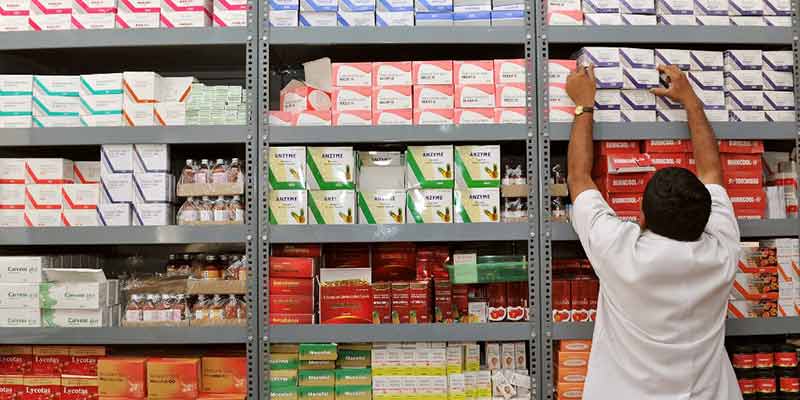- India
- Sep 14
Explainer / National List of Essential Medicines (NLEM)
Union Health Minister Mansukh Mandaviya launched National List of Essential Medicines (NLEM), 2022.
Several anti-cancer drugs, antibiotics and vaccines will now become more affordable as they are among 34 new additions to the National List of Essential Medicines, with the government saying this will reduce “patients’ out-of-pocket expenditure”.
Essential medicines
• Essential medicines are those that satisfy the priority health care needs of majority of the population. Such medicines are intended to be available in adequate amounts, in appropriate dosage forms and strengths with assured quality. They should be available in such a way that an individual or community can afford.
• The essential medicines list needs to be country specific addressing the disease burden of the nation and the commonly used medicines at primary, secondary and tertiary health care levels.
• An essential medicines list is expected to result in better quality of medical care, better management of medicines and cost-effective use of health care resources. The list of essential medicines is intended to have a positive impact on the availability and rational use of medicines.
• In 1975, the World Health Assembly requested WHO to assist Member States in selecting and procuring essential medicines, assuring good quality at reasonable cost. Subsequently, the first WHO model list of essential medicines was published in 1977.
• It stated that essential medicines were “of utmost importance, basic, indispensable and necessary for the health and needs of the population” and criteria for selection were based on efficacy, safety, quality and total cost. The emphasis was laid on disease burden and treatment guidelines as basis for selecting medicines to the EML.
• The scope and ambit of WHO EML were gradually widened and the number of medicines in the WHO EML increased over the years.
• The WHO EML is a model list. The decision about which medicines are essential remains a national responsibility based on the country’s disease burden, priority health concerns, affordability concerns etc.
• The burden of a disease may vary from country to country, so do the priority health care needs. For example, tuberculosis, malaria and diarrhoeal diseases are priority health care concerns in low and middle income countries.
National List of Essential Medicines
• The National List of Essential Medicines (NLEM) is one of the key instruments in a balanced health care delivery system of a country which includes accessible, affordable quality medicine at all the primary, secondary and tertiary levels of health care.
• The medicines in National List of Essential Medicines (NLEM) should be available at affordable costs and with assured quality. The medicines used in the various national health programmes, emerging and reemerging infections should be addressed in the list.
• In a country like India, which has a large geographic area with huge diversity in climate, food habits, culture, etc, there may be differences in health care priorities within the country, across different regions. For example, kala-azar is more prevalent in Bihar whereas Japanese encephalitis is more prevalent in Assam. Therefore, medicines for priority health care conditions for different regions of the country should be considered for inclusion in NLEM.
• The primary purpose of NLEM is to promote rational use of medicines considering the three important aspects — cost, safety and efficacy.
• It promotes prescription by generic names. Health care delivery institutions, health insurance bodies, standards setting institutions for medicines, medicine price control bodies, health economists and other healthcare stakeholders will be immensely benefitted in framing their policies.
• The drugs in NLEM are included in scheduled category and their price is regulated by the National Pharmaceutical Pricing Authority (NPPA).
• The National List of Essential Medicines (NLEM), notified by the ministry of health and family welfare is adopted as the primary basis for determining essentiality and is incorporated in the First Schedule of the Drugs (Prices Control) Order (DPCO), 2013 which constitutes the list of scheduled medicines for the purpose of price control.
• The NLEM is a dynamic document and is revised on a regular basis considering the changing public health priorities as well as advancement in pharmaceutical knowledge.
• The NLEM was first formulated in 1996 and it was revised thrice earlier in 2003, 2011, and 2015.
• Revision of NLEM 2022 has been done after constant consultation with stakeholders spanning from academia, industrialists and public policy experts, etc and crucial documents like WHO EML 2021.
NLEM is a dynamic document
The list of essential medicines cannot be static but has to be ever dynamic. It needs to be updated/ revised periodically due to the following reasons:
i) Changing Disease Burden Profile: The disease burden in a population does not remain static and keeps on changing both in short and long term.
ii) Antimicrobial Resistance: Development of resistance for medicines used for treatment of various infections like malaria, TB, HIV, kala-azar etc, have been reported in the country as well as the world. Emergence of resistant pathogens necessitate inclusion of newer antimicrobials for the treatment of such infectious conditions which in turn require update of NLEM regularly.
iii) Development of Newer and Better Medicines: The approval of newer and better medicines results in change in treatment practices/ guidelines for various disease conditions.
The following criteria are followed for inclusion in NLEM:
• Be useful in diseases which is a public health problem in India.
• Be licensed/ approved Drugs Controller General (India) (DCGI).
• Have proven efficacy and safety profile based on scientific evidence.
• Be comparatively cost effective.
• Be aligned with the current treatment guidelines.
• Recommended under National Health Programmes of India.
• When more than one medicine is available from the same therapeutic class, one prototype/ medically best suited medicine of that class to be included.
• Price of total treatment is considered and not the unit price of a medicine.
• Fixed dose combinations are usually not included.
• Vaccines as and when are included in Universal Immunisation Programme (for example Rotavirus vaccine).
The criteria for deletion from NLEM include:
• Banned in India.
• Reports of concerns on the safety profile.
• The disease burden for which a medicine is indicated is no longer a national health concern and in case of antimicrobials, if the resistance pattern has rendered an antimicrobial ineffective.
Highlights of the NLEM 2022
• The medicines have been categorized into 27 therapeutic categories.
• Anti-infectives like Ivermectin, Mupirocin and Meropenem have been added to the list, taking the total drugs under it to 384.
• Four major anti-cancer drugs — Bendamustine Hydrochloride, Irinotecan HCl Trihydrate, Lenalidomide and Leuprolide acetate which are effective in various types of cancers, and psychotherapeutic medicines — Nicotine Replacement Therapy and Buprenorphine — have been added to the list.
• As many as 26 drugs such as Ranitidine, Sucralfate, white petrolatum, Atenolol and Methyldopa have been dropped from the previous list of total 376 drugs. The deletion has been done based on the parameters of cost effectiveness and availability of better drugs.
• In the revised list, endocrine medicines and contraceptives Fludrocortisone, Ormeloxifene, Insulin Glargine and Teneliglitin have been added.
• Montelukast, which acts on the respiratory tract, and ophthalmological drug Latanoprost also figure in the list.
• Besides, cardiovascular medicines Dabigatran and Tenecteplase too find place in the list besides medicines used in palliative care.
• Rotavirus vaccine has also been added in the list.
• COVID-19 drugs and vaccines have not been added in the list as they have been granted emergency use authorisations and the data is still not conclusive and complete from the regulatory perspective.
Manorama Yearbook app is now available on Google Play Store and iOS App Store



